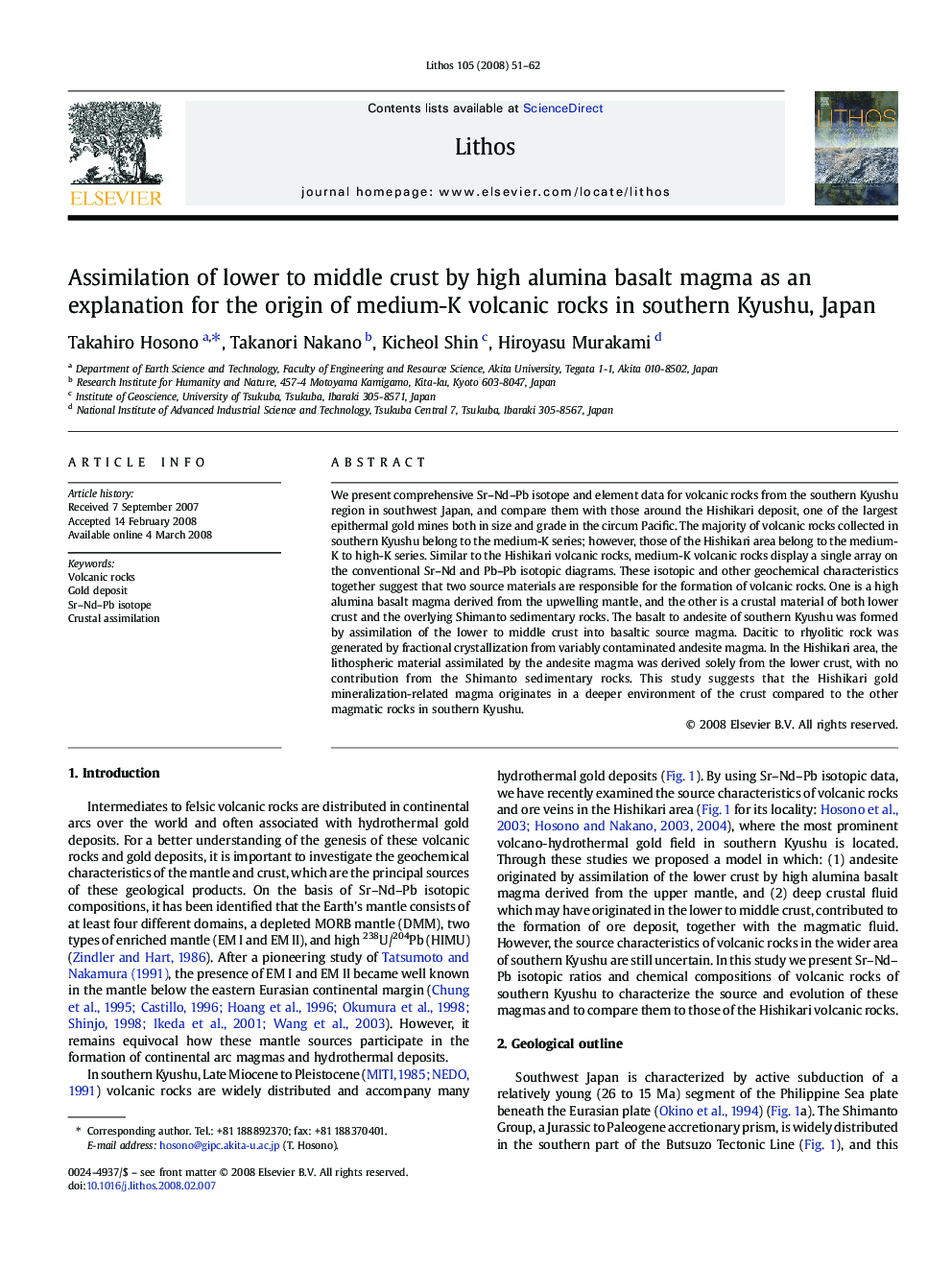| Article ID | Journal | Published Year | Pages | File Type |
|---|---|---|---|---|
| 4717388 | Lithos | 2008 | 12 Pages |
We present comprehensive Sr–Nd–Pb isotope and element data for volcanic rocks from the southern Kyushu region in southwest Japan, and compare them with those around the Hishikari deposit, one of the largest epithermal gold mines both in size and grade in the circum Pacific. The majority of volcanic rocks collected in southern Kyushu belong to the medium-K series; however, those of the Hishikari area belong to the medium-K to high-K series. Similar to the Hishikari volcanic rocks, medium-K volcanic rocks display a single array on the conventional Sr–Nd and Pb–Pb isotopic diagrams. These isotopic and other geochemical characteristics together suggest that two source materials are responsible for the formation of volcanic rocks. One is a high alumina basalt magma derived from the upwelling mantle, and the other is a crustal material of both lower crust and the overlying Shimanto sedimentary rocks. The basalt to andesite of southern Kyushu was formed by assimilation of the lower to middle crust into basaltic source magma. Dacitic to rhyolitic rock was generated by fractional crystallization from variably contaminated andesite magma. In the Hishikari area, the lithospheric material assimilated by the andesite magma was derived solely from the lower crust, with no contribution from the Shimanto sedimentary rocks. This study suggests that the Hishikari gold mineralization-related magma originates in a deeper environment of the crust compared to the other magmatic rocks in southern Kyushu.
